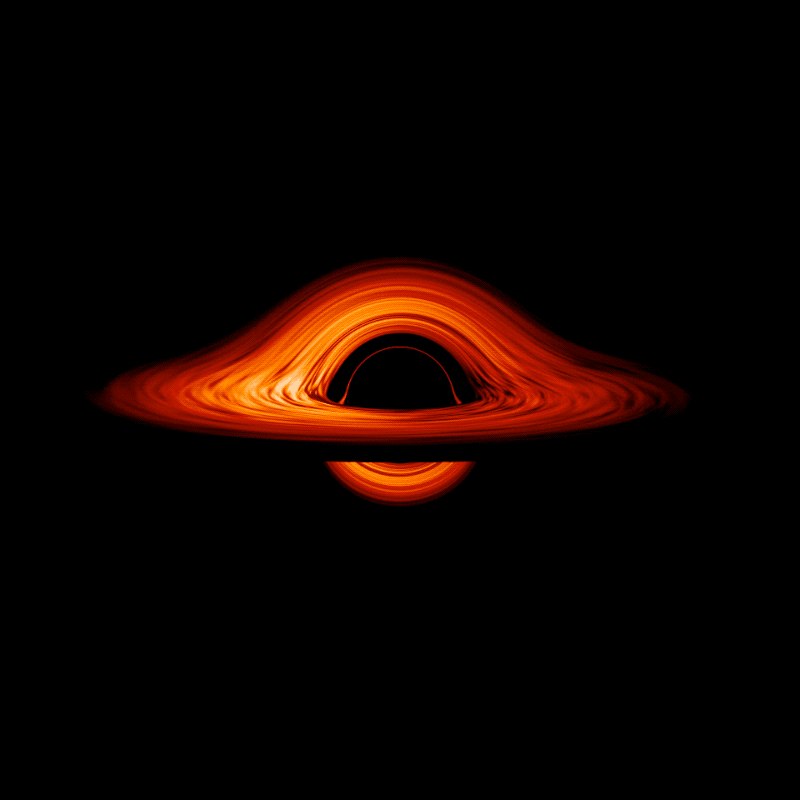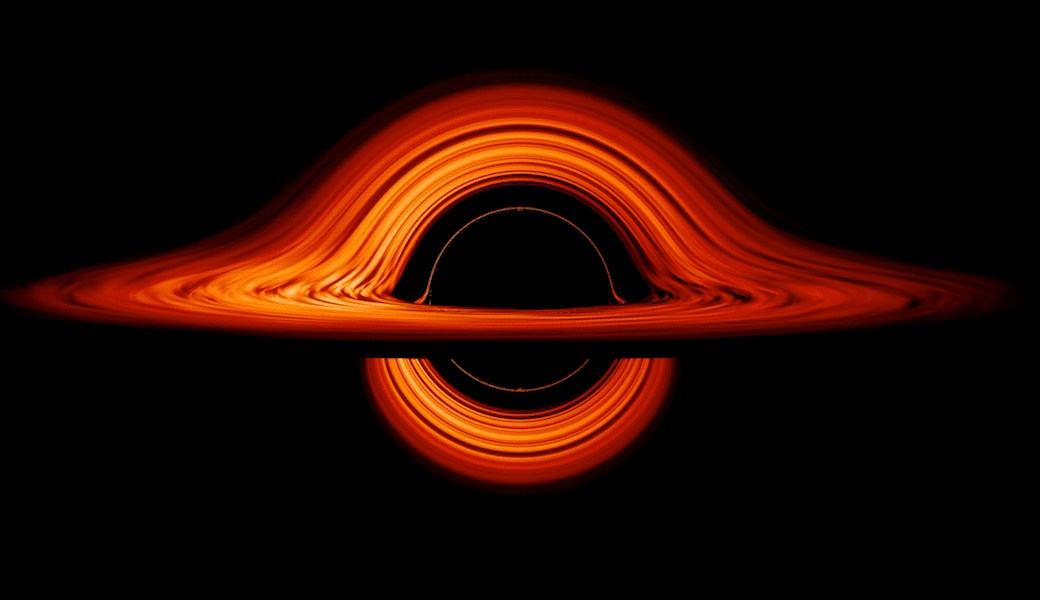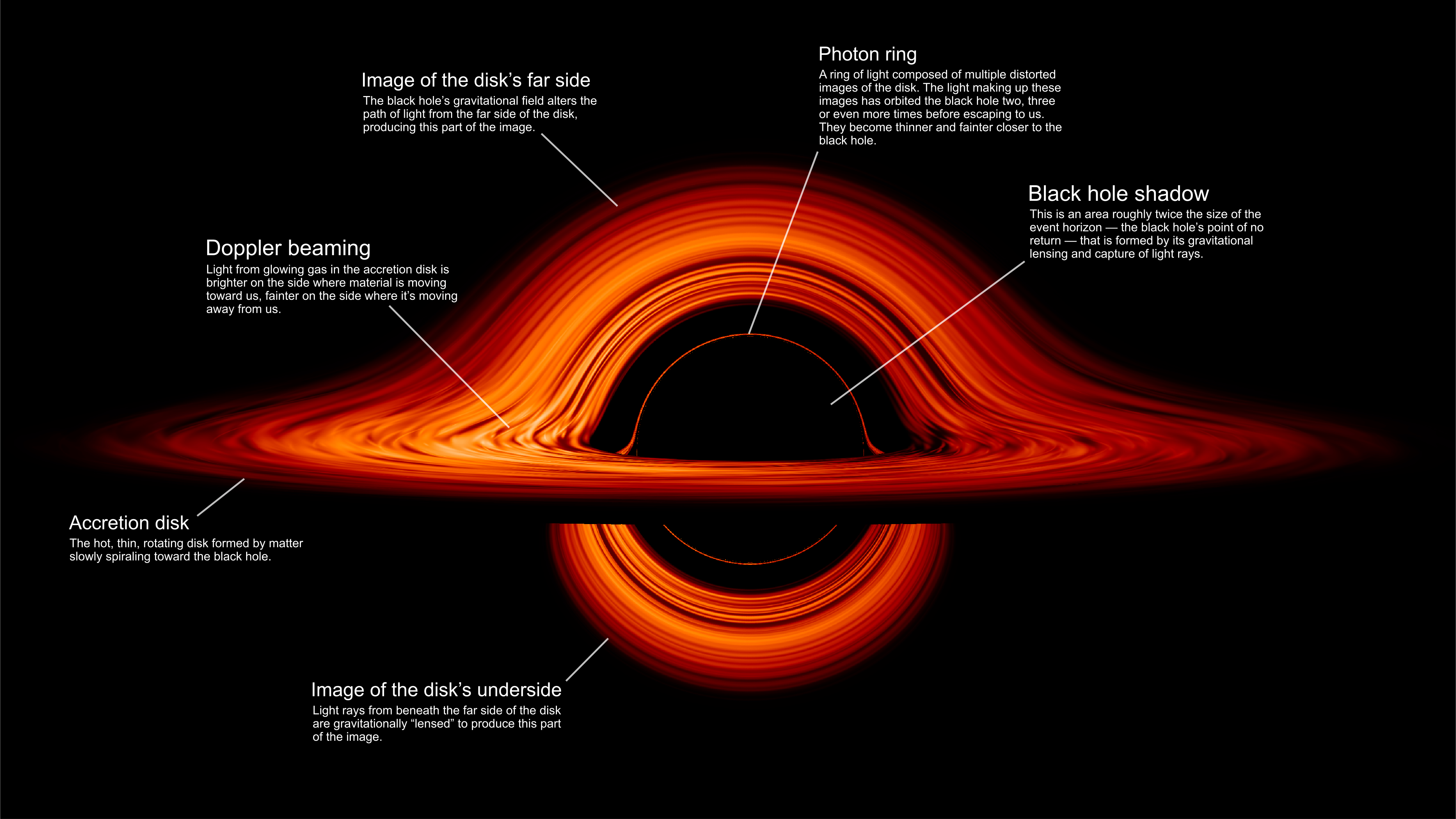New NASA simulations: what it’s like around a black hole
A black hole grows by being fed from a so-called accretion disk that supplies it with fresh matter. This disk is made up of plasma, ionized gas that orbits in continuous spirals around the black hole at high speeds. This plasma is constantly heated by internal collisions.
To an observer, however, an accretion disk won’t look like a classic disk (like, for example, Saturn’s rings). This is because a black hole generates such an unbelievably large force of gravity that radiation from the rear part of the disk becomes distorted as it moves toward the observer. Now, researchers at NASA’s Goddard Space Flight Center in Greenbelt, Maryland, have reenacted this in impressive, mesmerizing computer simulations.
From these simulations, you can see that not only does the rear part of the disk appear almost perpendicular to the front of the disk when you view it edge-on, but there are also nodes that constantly form and dissipate owing to magnetic fields winding and twisting their way through the plasma. In the immediate vicinity of the black hole, the ionized atoms nearly reach the speed of light, while the disk rotates more slowly farther out. This difference leads to the result that the bright nodes are stretched and broken apart, which can be seen in the disk as light and dark bands.
A second phenomenon can also be seen in the visualizations: the photon ring. It forms so close to the black hole that only matter rotating at the speed of light (thus, photons) can be in this zone.
Even more interesting is if the black hole is not static but rotating (which is the normal case). Of course, what you’re looking at is not the hole itself, but the accretion disk forming hypnotizing patterns.
All of the simulations can be viewed at the following page: https://svs.gsfc.nasa.gov/13326 (if the page doesn’t load, try again at a different time of the day; it seems to be very popular right now)


